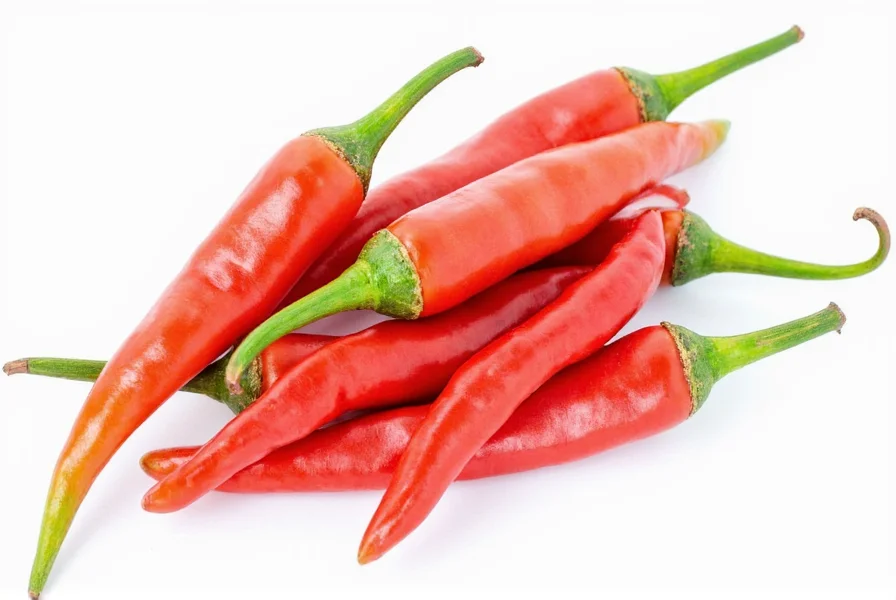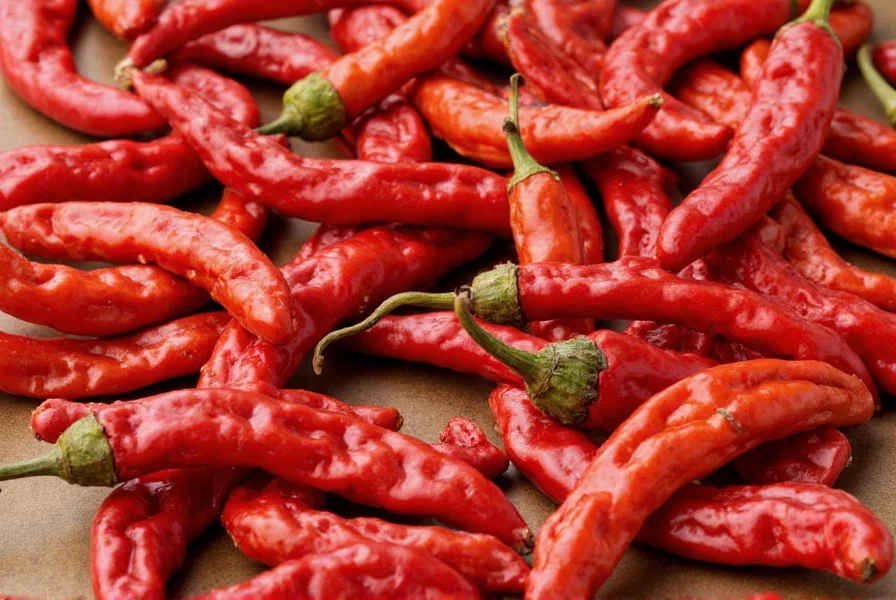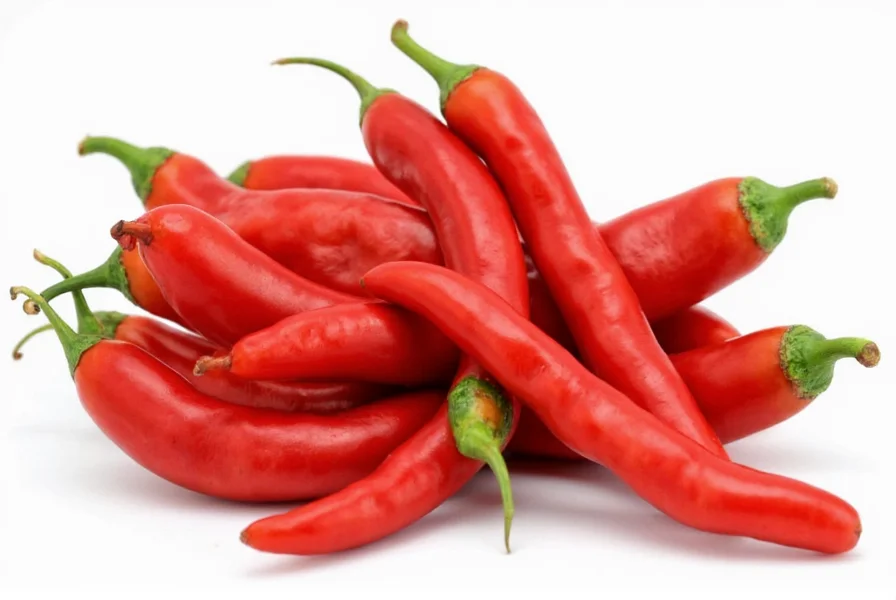Chili (with 'i') typically refers to the American spice blend or the dish 'chili con carne,' while chile (with 'e') is the Spanish term for the actual pepper fruit used in Latin American cooking. This single-letter difference represents distinct culinary concepts that affect everything from grocery shopping to recipe execution.
Understanding this chili vs chile distinction prevents common cooking mistakes and helps you select the right ingredients for authentic recipes. Let's clarify this widespread confusion once and for all.

Table of Contents
- Chili vs Chile: The Core Difference Explained
- Spelling Confusion: Why This Matters for Your Cooking
- Heat Levels Comparison: What to Expect from Each
- Cooking Applications: When to Use Which
- Buying Guide: How to Find Authentic Products
- Regional Usage Differences Around the World
- Frequently Asked Questions: Chili vs Chile Clarified
- Practical Takeaways for Your Next Meal
Chili vs Chile: The Core Difference Explained
The distinction between these terms is fundamental to understanding global cuisine:
| Term | True Meaning | What It Actually Refers To | Where You'll Encounter It |
|---|---|---|---|
| Chili (with 'i') | Americanized term | 1. The dish 'chili con carne' 2. Pre-mixed seasoning blend containing peppers plus other spices |
United States grocery stores, Tex-Mex recipes |
| Chile (with 'e') | Original Spanish spelling | The actual pepper fruit (fresh or dried) of the Capsicum genus | Mexico, South America, authentic Latin recipes |
Critical Clarification:
- When recipes call for "chile powder," they mean ground dried peppers only (not the American spice blend)
- When U.S. stores sell "chili powder," it's typically a pre-mixed seasoning containing cumin, garlic powder, and other spices
- The spelling difference directly impacts which product you should purchase for authentic results
Spelling Confusion: Why This Matters for Your Cooking
The single-letter difference creates widespread confusion that directly impacts cooking outcomes. Here's what you need to know:
| Context | Correct Term | Why It Matters | Common Mistake |
|---|---|---|---|
| Referring to the pepper itself | Chile (chih-lay) | Maintains authenticity in Latin cooking | Using "chili" when discussing actual peppers |
| Referring to the American dish | Chili (chih-lee) | Correctly identifies the Tex-Mex stew | Calling chili con carne "chile con carne" |
| Shopping for authentic ingredients | Look for "dried chiles" | Ensures you get pure peppers, not spice blends | Buying "chili powder" when recipe needs pure ground chiles |
Real-World Impact:
- Using American "chili powder" in a recipe calling for "ground chiles" will add unintended flavors (cumin, oregano) that alter authenticity
- Substituting actual chiles when a recipe specifies "chili powder" will create an entirely different flavor profile
- Understanding this difference is essential for authentic Mexican, Peruvian, and South American cooking
Heat Levels Comparison: What to Expect from Each
Contrary to popular belief, the spelling doesn't indicate heat level. Both terms can refer to mild or extremely hot varieties depending on the specific pepper. Here's how to navigate heat levels:
| Chile Variety | Spelling Used | Heat Level (SHU) | Best Culinary Applications |
|---|---|---|---|
| Guajillo | Chile | 2,500–5,000 SHU | Sauces, moles, marinades (Mexican cooking) |
| Ancho | Chile | 1,000–2,000 SHU | Red enchilada sauce, authentic stews |
| Chipotle | Chile | 2,500–8,000 SHU | Smoky applications, adobo sauce |
| Generic "Chili Powder" | Chili | Varies (usually mild) | Tex-Mex dishes, American-style chili |
| Hatch Green Chile | Chile | Varies (mild to hot) | New Mexican cuisine, roasting applications |
Important Note:
- American "chili powder" is typically mild (1,000-2,000 SHU) because it's diluted with other spices
- True ground chiles maintain the heat level of the specific pepper used
- The hottest chiles (habanero, ghost pepper) are always referred to as "chiles" in professional culinary contexts
Cooking Applications: When to Use Which
Understanding which term to use in specific cooking scenarios prevents recipe failures and ensures authentic results:
When to Use "Chile" (Actual Peppers)
- Authentic Mexican mole sauces (requires specific chile varieties)
- Traditional salsas where pure pepper flavor is essential
- When a recipe specifies "dried chiles" or "whole chiles"
- Latin American dishes where regional authenticity matters
When to Use "Chili" (American Blend)
- Texas-style chili con carne
- American taco seasoning recipes
- BBQ rubs that follow U.S. culinary traditions
- When a recipe specifically calls for "chili powder" (American version)
Critical Substitution Guide
- If recipe says "chile powder" → Use pure ground dried peppers (ancho, guajillo, etc.)
- If recipe says "chili powder" → Use American spice blend (unless noted otherwise)
- Need to substitute? → For authentic recipes, never substitute American chili powder for ground chiles

Buying Guide: How to Find Authentic Products
Navigating the grocery store requires knowing where to look and what labels actually mean:
Shopping for Authentic Chiles
- Where to find them: International/Mexican food aisle (look for whole dried peppers)
- What to look for: "Chiles" or "Chiles Secos" on packaging (not "chili")
- Common authentic brands: La Morena, Hatch, El Guapo
- Quality indicators: Deep color, pliable texture (not brittle), strong aroma
Shopping for American Chili Products
- Where to find them: Standard spice aisle
- What to look for: "Chili Powder" on label (typically McCormick, Badia, etc.)
- Check ingredients: Should list cumin, garlic powder, oregano in addition to peppers
- Quality indicators: Bright red color, strong aroma of multiple spices
Pro Tips for Confident Shopping
- Ask for "dried chiles" at Mexican markets, not "chili powder"
- When in doubt, check the ingredients list: authentic chile products list only peppers
- For authentic Mexican cooking, avoid American "chili powder" entirely
- Store whole dried chiles in airtight containers for best flavor preservation
Regional Usage Differences Around the World
The terminology varies significantly by region, affecting how recipes are interpreted globally:
United States Terminology
- Chili: Refers to both the dish (chili con carne) and the spice blend
- Chile: Sometimes used in Southwestern states (New Mexico, Arizona) for fresh peppers
- Confusion factor: High (most Americans don't distinguish the terms)
Mexico & Latin America Terminology
- Chile: The only correct term for the pepper (never "chili")
- Chili con carne: Not a traditional dish (American invention)
- Regional variations: "Aji" in Caribbean/South America, "chile" in Mexico/Central America
Professional Culinary World
- Chefs distinguish precisely between the terms for authenticity
- Menu descriptions use "chile" for actual peppers, "chili" for the American dish
- Cookbooks specify carefully to prevent cooking errors

Frequently Asked Questions: Chili vs Chile Clarified
What's the main difference between chili and chile?
Chile (with 'e') is the Spanish word for the actual pepper fruit, used throughout Latin America. Chili (with 'i') in American English refers to either the spice blend (containing multiple spices) or the dish 'chili con carne.' The spelling difference represents fundamentally different culinary concepts.
Which spelling is correct for cooking?
Both are contextually correct, but using the wrong one creates cooking errors. For authentic Mexican or Latin American recipes, 'chile' (with 'e') is always correct when referring to the pepper itself. 'Chili' (with 'i') is correct when referring to the American dish or spice blend. Professional chefs maintain this distinction for recipe accuracy.
Why does the spelling difference cause cooking problems?
Because American 'chili powder' contains additional spices (cumin, garlic, oregano), while authentic 'chile powder' is pure ground peppers. Using one when a recipe specifies the other creates completely different flavor profiles. This is why many home cooks struggle with authentic Latin recipes.
How can I tell which product to buy at the store?
Check both the spelling and ingredients: 'Chile' products will list only peppers in ingredients, while 'chili' products will include multiple spices. Authentic chiles are typically sold whole in the international aisle, while American chili powder is in the standard spice section. When in doubt, ask for 'dried chiles' at Mexican markets.
Does pronunciation differ between the terms?
Yes. 'Chile' (the pepper) is pronounced 'chih-lay' in Spanish, while 'chili' (the American term) is pronounced 'chih-lee.' This pronunciation difference helps chefs and cooks distinguish the terms verbally in professional kitchens.
Can I make authentic Mexican food with American chili powder?
No. Authentic Mexican cuisine requires specific chile varieties (ancho, guajillo, pasilla) used individually or in precise combinations. American chili powder contains additional spices that alter the authentic flavor profile. For genuine results, use whole dried chiles and grind them yourself or purchase pure ground chiles.
Practical Takeaways for Your Next Meal
Now that you understand the critical chili vs chile distinction, you can shop and cook with confidence:
- When a recipe says "chile," it means the actual pepper - never substitute American chili powder
- When shopping, look for "dried chiles" in the international aisle for authentic cooking
- Understand that spelling directly impacts which product you need for recipe success
Quick Reference Guide:
- Chile (with 'e') = The actual pepper (always use for authentic Latin cooking)
- Chili (with 'i') = American spice blend or the dish 'chili con carne'
- When in doubt: Check ingredients - pure peppers = chile, multiple spices = chili
Mastering this simple distinction transforms your cooking from inauthentic to exceptional. Whether you're making mole negro or Texas chili, using the correct ingredients makes all the difference. Next time you're at the store, you'll know exactly which product to reach for - no more guessing between those similar-looking packages!










 浙公网安备
33010002000092号
浙公网安备
33010002000092号 浙B2-20120091-4
浙B2-20120091-4